| About | Maps and Graphics Images |
| Scientific Personnel and Areas of Study | International Scientific Cooperation |
| Scientific Areas | Publications |
The Main Problems Addressed in Scientific Research
During the past 25 years, the research in the field of volcanology has been concentrated on versatile issues of the Late Pliocene – Quaternary volcanism. On the baseline of data related to the settings of origin and distribution of the volcanic centers, structural types, composition, volcanic facies and units of the volcanoes, 6 volcanic regions were distinguished in the territory of Armenia: Kechout, Aragats, Gegham, Vardenis, Syunik, and Kapan.
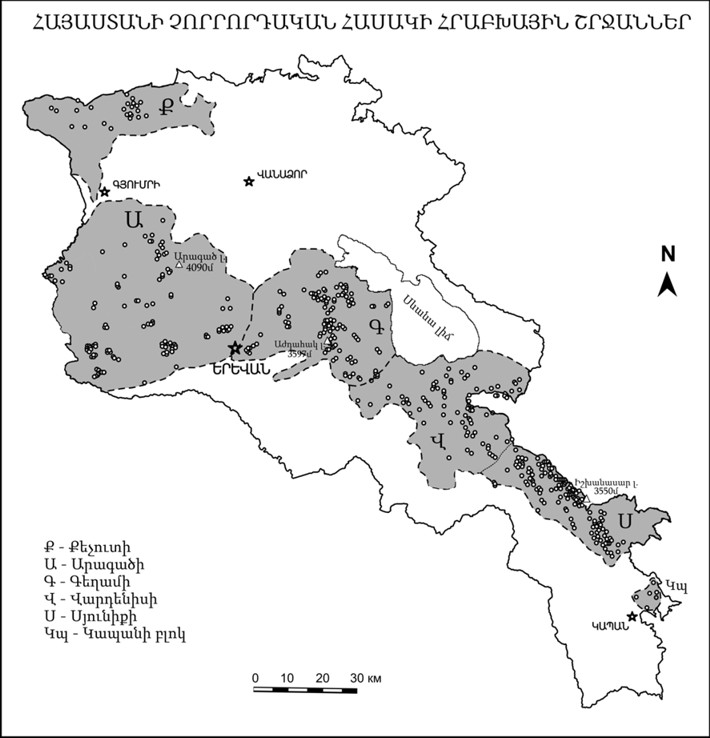
1. As a result of additional mapping works, the following products were updated and compiled in GIS format:
1.1. The map of the Late-Pliocene – Quaternary volcanic formations in the territory of Armenia and Nagorno-Karabakh Republic (at the scale of 1:1,000,000) (authors: R. Jrbashyan, S. Karapetyan, and Y. Ghukasyan).
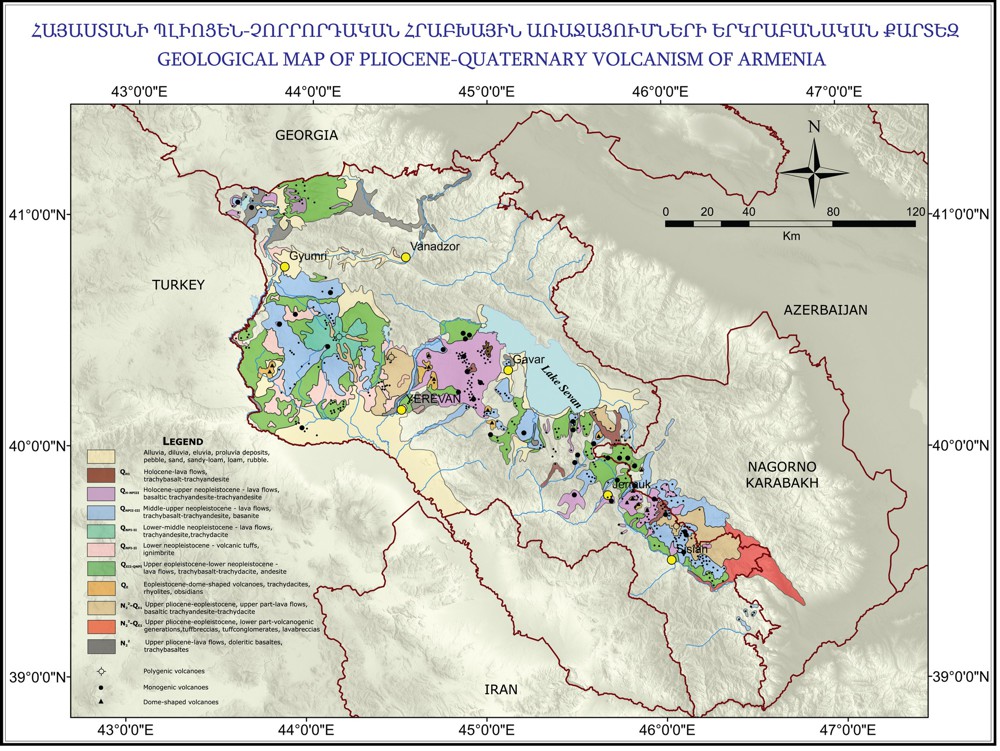
1.2. The map of the Volcanic Massif of Aragats and the surrounding area (at the scale of 1:100,000) (authors: Kh. Meliksetian, R. Jrbashyan, Y. Ghukasyan, and G. Navasardyan).
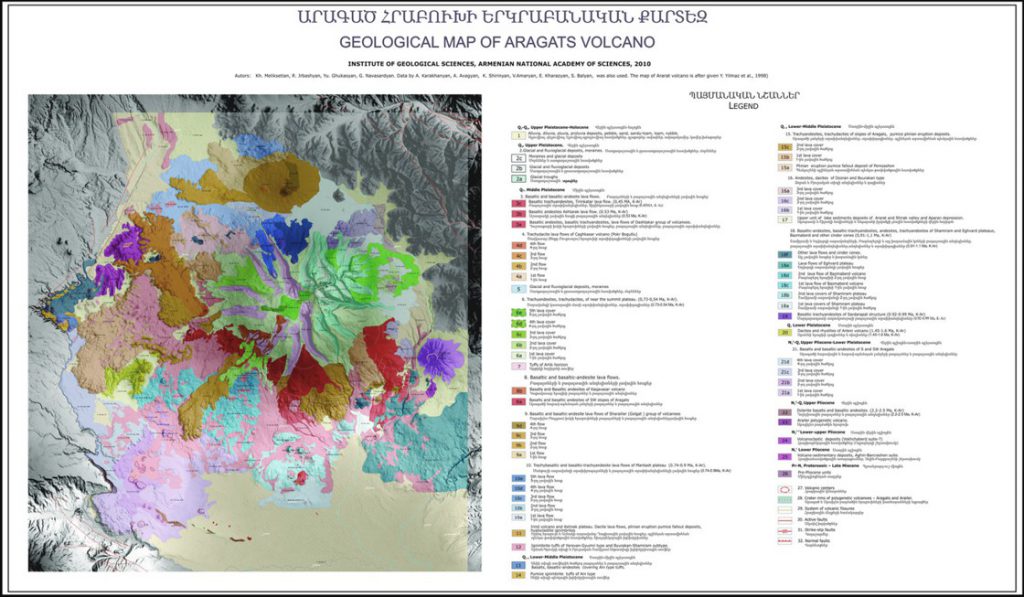
1.3. The map of Geghama mountain range (at the scale of 1:100,000) (authors: S. Karapetyan, and G. Navasardyan).
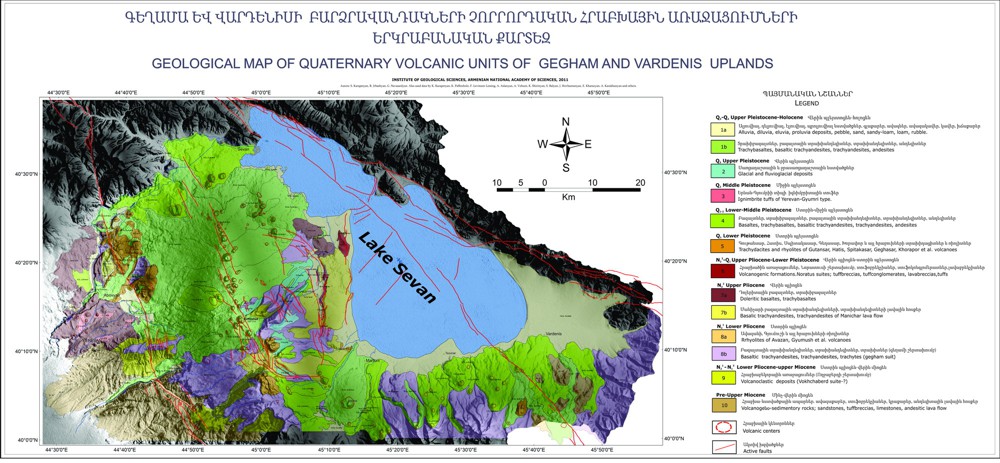
1.4. The map of the Syunik mountain range (at the scale of 1:100,000) (authors: S. Karapetyan, R. Jrbashyan, and G. Navasardyan).
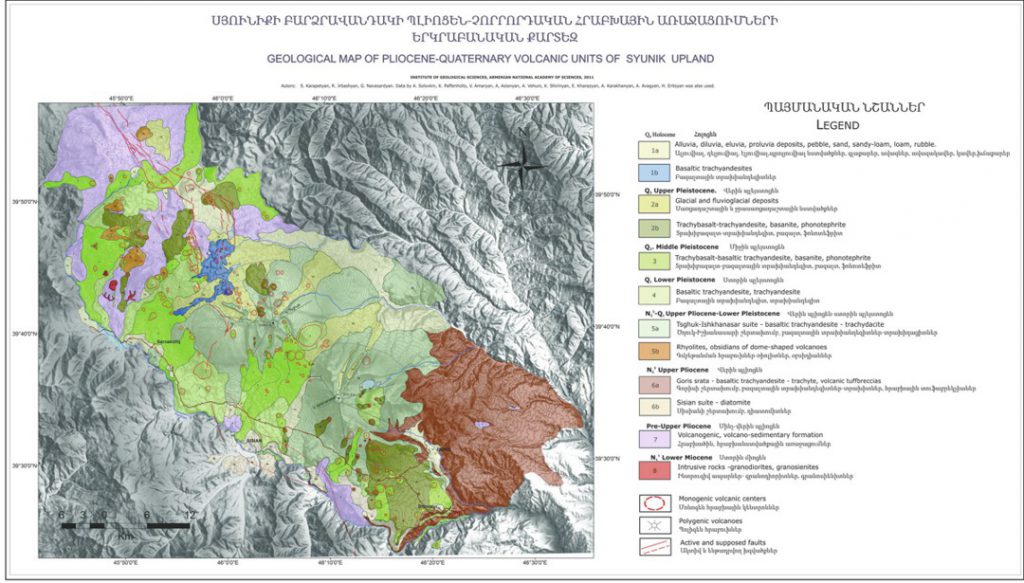
2. It was established that the Late Pliocene – Quaternary volcanism accompanying the late-collision geodynamic settings was reflected in:
a) Fractured, weakly differentiated basalts, forming about 100 km-long lava flows and lava covers;
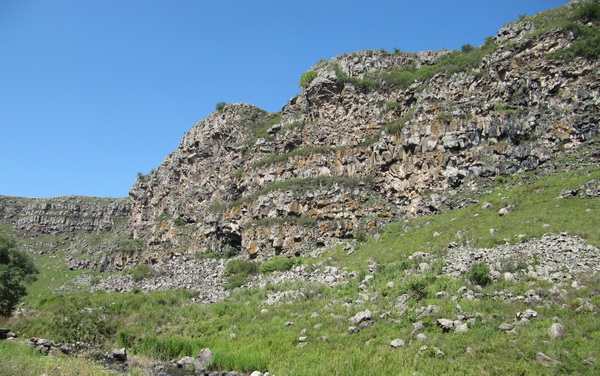
b) Large volcanic massifs of Aragats, Arailer, Ishkhanassar, and Tsghouk that are related to the central type and represent complex structures;
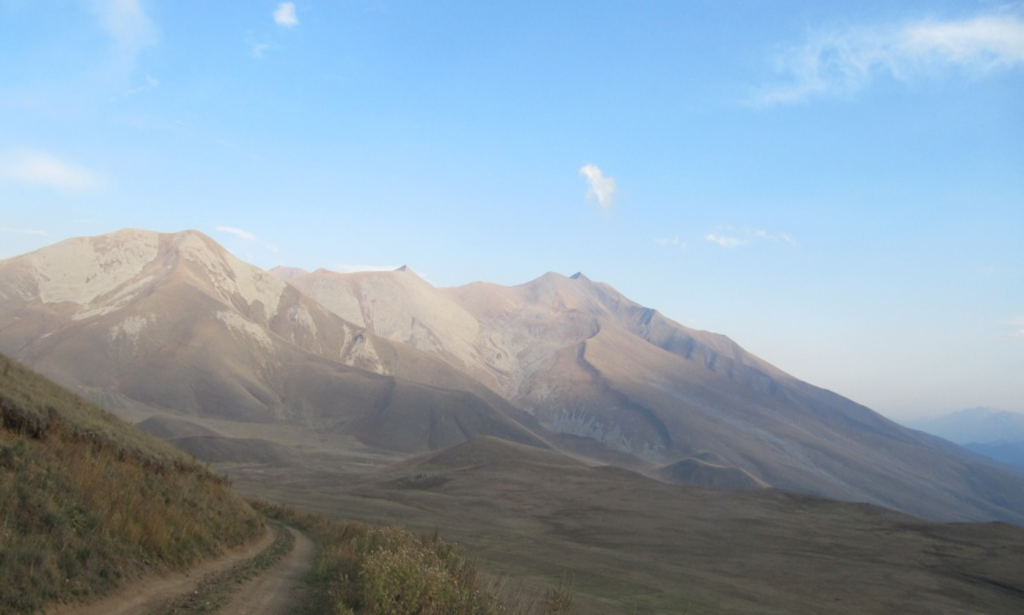
c) Tuff-ignimbrite covers of unique dacite-andesite composition, covering an area of about 5000 km2, which are subdivided into several types;

d) Around 550 monogenentic areal-type eruptions from effusive-explosive cones and centers, located in different volcanic regions.
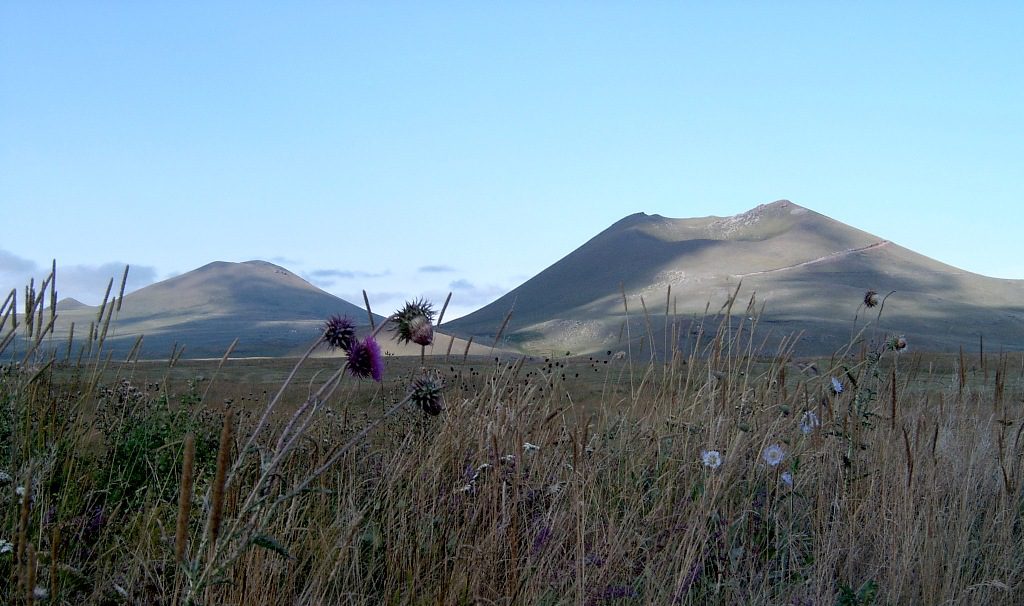
The petrographical, mineralogical, petrochemical, petrological, geochemical, and isotope geochemical features of various volcanogenic formations, as well as regularities of volcanism development in different volcanic regions in Armenia were examined and analyzed, based on the up-to-date analytical data. The determined primary values of 87Sr/86Sr=0.70410-0.70432 and 143Nd/144Nd=0.51281-0.51290 correspond to the mantle source characteristics. Besides, absolute age data were produced for the recent activation of Aragats volcano (480.0 Ma, Irind volcano). In general, the volcanic petrochemistry sequence lines are characterized by non-saturation in SiO2, as well as by the North-South trends of increase in alkalinity and contents of Ta, Nb, Zr, and Hf elements and TiO2 and P2O5. Geo-thermometers of the rock-forming minerals were applied to estimate 950-1175°C crystallization values.



